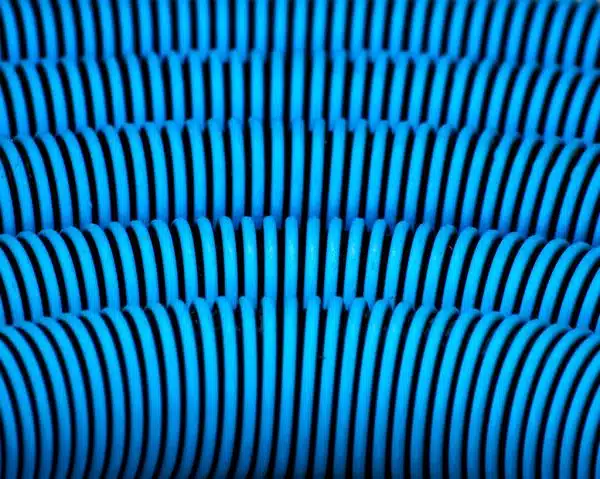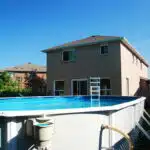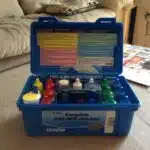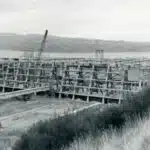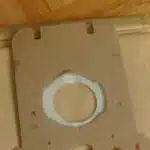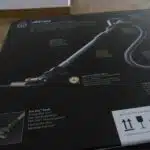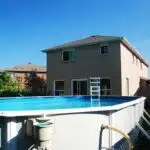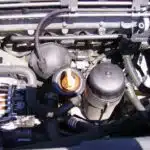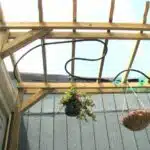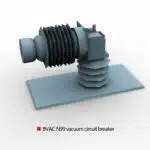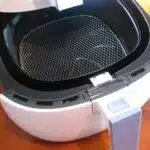Pool vacuuming is an essential task for any pool owner who wants to maintain the cleanliness and hygiene of their pool. It involves removing debris, dirt, and other contaminants that accumulate in the water, which if left unattended can create a breeding ground for bacteria and algae. Vacuuming a pool may seem like a simple task, but it requires some careful planning and execution to ensure that it is done effectively.
As a pool vacuuming specialist, I have observed that many pool owners struggle with this task due to lack of knowledge or inadequate equipment. This article will provide a comprehensive guide on how to vacuum a pool effectively. It will cover everything from preparing your equipment, setting up the vacuum system, to troubleshooting common issues. By following these guidelines, you can keep your pool sparkling clean and safe for swimming while also saving time and money on costly maintenance services.
Understanding The Importance Of Pool Vacuuming
Pool maintenance is a crucial aspect of keeping your pool in good condition. Regular pool vacuuming is one of the most essential tasks in pool maintenance. A clean and clear pool not only looks visually appealing, but it also ensures a safe swimming environment for you and your loved ones.
The benefits of regular pool vacuuming are numerous. Vacuuming helps remove debris, dirt, and other unwanted materials that may have accumulated on the floor or walls of your pool. This not only helps maintain the aesthetic appearance of your pool but also prevents potential health hazards caused by bacteria growth due to stagnant water.
Regular vacuuming also prolongs the lifespan of your pool equipment. When debris accumulates, it can clog filters and reduce the efficiency of pumps and other equipment, leading to costly repairs or replacements. By regularly vacuuming your pool, you ensure that your equipment performs optimally while extending its longevity.
To assess your pool’s cleaning needs effectively, it’s important to understand why regular vacuuming is essential for maintaining a clean and safe swimming environment. By recognizing the importance of this task in pool maintenance, you’ll be better equipped to identify when it’s time to take action and keep your pool clean at all times.
Assessing Your Pool’s Cleaning Needs
Understanding the Importance of pool vacuuming is crucial to maintaining a clean and healthy swimming environment. Pool owners should not only be aware of how often they need to vacuum their pool, but also how to assess the cleaning needs of their pool. Assessing your pool’s cleaning needs involve two main steps: assessing pool size and identifying pool contaminants.
Assessing Pool Size: The size of your pool will determine the type of vacuum cleaner you should use. For small pools, handheld or manual vacuums may suffice, while larger pools may require automatic or robotic vacuums. It is important to choose a vacuum that can handle the size of your pool, as this will ensure efficient cleaning.
Identifying Pool Contaminants: Before beginning the process of vacuuming your pool, it is important to identify any contaminants present in your swimming environment. This could include dirt, leaves, insects, and other debris that may have accumulated over time. Once identified, you can choose a vacuum with appropriate attachments that can remove these contaminants effectively.
- Use a telescopic pole: A telescopic pole allows you to reach all areas of your pool without straining yourself or having to move around too much.
- Choose the right vacuum head: Your choice of vacuum head will depend on the type of surface in your swimming environment.
- Check and clean filter regularly: To ensure efficient cleaning and prolong the life span of your equipment, check and clean filters regularly.
As a professional in pool vacuuming services, I believe that assessing your pool’s cleaning needs is an essential step towards maintaining a clean and safe swimming environment for you and your loved ones. By understanding how to assess the size of your pool and identifying contaminants present in it, you can choose appropriate equipment that can help you achieve optimal results during every round of cleaning.
Moving forward into our next section on preparing for equipment for vacuuming, it is important to note that having an organized maintenance routine is key. By following a set routine, you can ensure that your equipment is always in good condition and ready for use whenever the need arises.
Preparing Your Equipment For Vacuuming
To achieve a clean pool, it’s essential to prepare your equipment thoroughly before vacuuming. Cleaning techniques and maintenance tips must be followed to ensure that your vacuum operates at its best. One of the important things you should do is to check if all hoses, brushes, and attachments are in good condition. Worn-out parts may cause clogs and leaks, which can lead to poor suction.
Another crucial aspect of equipment preparation is checking the filter system. Ensure that the filter basket is free from debris, and the filter cartridge or sand filter has been backwashed or cleaned properly. A dirty filter system can reduce your vacuum’s efficiency and cause damage to the pump motor. Thus, it’s advisable to clean or replace filters regularly.
Lastly, before starting your vacuuming session, make sure that your pool chemicals are balanced according to recommended levels. Unbalanced water chemistry can affect the effectiveness of your cleaning efforts and lead to costly damages in the long run. By taking these necessary steps in preparing your equipment for pool vacuuming, you can ensure that you’re getting a thorough clean every time.
As you prepare your equipment for pool vacuuming, choosing the right vacuum head for your pool is an equally vital step in achieving a pristine swimming area. The wrong size or type of vacuum head can leave dirt behind or damage delicate surfaces such as tiles or vinyl liners. In our next section, we’ll guide you in selecting the perfect vacuum head for different types of pools so that you can enjoy crystal-clear waters with ease!
Choosing The Right Vacuum Head For Your Pool
Now that you have prepared your equipment, it is time to choose the right vacuum head for your pool. There are different brands available in the market, and each brand has its own unique features and benefits. Some popular brands include Pentair, Hayward, and Zodiac. It is important to research these brands thoroughly and compare their features before making a purchase.
One of the most important things to consider when choosing a vacuum head for your pool is size. The size of your pool will determine the size of the vacuum head needed. A smaller pool will require a smaller vacuum head, while a larger pool will require a larger one. It is also important to consider the depth of your pool, as some vacuum heads may not be able to reach deeper areas.
When choosing a vacuum head for your pool, it is crucial to take into account both brand comparison and size considerations. By doing so, you can ensure that you are selecting the best product that meets both your needs and budget. Once you have selected the right vacuum head for your pool, it is time to connect it to the hose and start cleaning!
Connecting Your Vacuum Head To The Hose
To connect your vacuum head to the hose, it is important to ensure equipment compatibility. First, verify that your vacuum head is compatible with your pool’s filtration system. This can be done by checking the manufacturer’s instructions or consulting with a professional. Using incompatible equipment can result in inefficient cleaning or even damage to your pool’s filtration system.
Once you have verified compatibility, attach the hose to the vacuum head by sliding it onto the fitting and securing it with a hose clamp. Be sure to tighten the clamp securely to prevent any leaks. If you encounter difficulty connecting the hose, check for any obstructions within the fitting or hose itself. Troubleshooting tips for connection issues may include lubricating the fitting with soapy water or using pliers to adjust any misshapen areas of the hose.
It is also important to take proper care of your vacuuming equipment after use. Rinse off any debris or residue from both the vacuum head and hose before storing them in a dry place. Proper maintenance will prolong the life of your equipment and ensure efficient performance during future use. With these steps in mind, you can successfully connect your vacuum head to the hose and move on to attaching it to the skimmer basket for thorough pool cleaning.
Attaching The Hose To The Skimmer Basket
- There are a variety of hose connectors that can be used to connect the hose to the skimmer basket.
- Generally, the skimmer basket is designed with a specific type of connector to ensure a secure connection.
- It is important to ensure that the hose is properly inserted into the basket and that the connection is secure.
- Careful inspection should be taken to ensure the connection is air-tight and that the hose connector is properly secured to the basket.
Types Of Hose Connectors
As a pool vacuuming specialist, one of the crucial aspects of maintaining a clean pool is attaching the hose to the skimmer basket. The hose connectors play an essential role in ensuring that dirt and debris are effectively removed from the pool. Different sizes of hose connectors are available in the market, ranging from 1.25 inches to 2 inches.
Selecting the right size of hose connector is critical to ensure compatibility with different vacuum heads. When choosing a hose connector, it is essential to consider its compatibility with your existing equipment. For instance, if you have a standard pool vacuum head, you should look for a connector that can fit it perfectly.
Moreover, some hose connectors come with adapters that can fit multiple types of vacuum heads. Such connectors offer flexibility and ease of use when switching between different vacuum heads. Ultimately, selecting the right type of hose connector will not only improve your cleaning efficiency but also prolong the life of your equipment.
Inserting Hose Into Basket
As a pool vacuuming specialist, ensuring that your pool is clean and well-maintained requires more than just selecting the right size of hose connector. You must also know how to properly insert the hose into the skimmer basket for optimal cleaning efficiency. The skimmer basket serves as the first line of defense against debris and dirt, trapping them before they reach the pump and filter system.
Different types of pool hoses are available in the market, including suction and pressure hoses. While both types work effectively when cleaning a pool, each has its unique benefits and drawbacks. Suction hoses are easy to use, affordable, and ideal for small to medium-sized pools. On the other hand, pressure hoses are more powerful and better suited for larger pools or those with heavy debris loads.
When inserting the hose into the skimmer basket, it is essential to ensure that it is securely attached to prevent any leaks or loss of suction during operation. To do this, you should first remove any debris or leaves from the skimmer basket before attaching the hose. Once attached, carefully lower the hose into the water while holding onto its end until it reaches the bottom of the pool.
In summary, knowing how to properly attach and insert your pool vacuuming equipment greatly affects its performance in keeping your pool clean. Understanding different types of pool hoses and basket filters’ functions will help you determine which equipment is best suited for your specific needs. By following these guidelines on attaching hoses to skimmer baskets correctly, you can prolong your equipment’s life while providing an optimal swimming experience for yourself and others.
Adjusting Your Pool’s Filtration System
Did you know that maintaining your pool’s filtration system can save you hundreds of dollars in repairs and replacements? Neglecting this crucial aspect of pool maintenance can lead to clogging, leaks, and even equipment failure. As a pool vacuuming specialist, I highly recommend adjusting your filtration system regularly to ensure proper water flow and prevent costly damage.
Here are four easy steps to adjust your pool’s filtration system:
- Check the pressure gauge on your filter. If it reads higher than its normal range, it’s time for a backwash or cleaning.
- Adjust the water flow by opening or closing the valves leading to your skimmer and main drain. This will help distribute water evenly throughout the system.
- Clean or replace your filter as needed. A dirty filter can reduce water flow and make your pump work harder than necessary.
- Monitor the chemical levels in your pool regularly to prevent imbalances that could harm your filtration system.
Proper filtration system maintenance is essential for keeping your pool clean, clear, and safe for swimming. By adjusting water flow and cleaning or replacing filters when necessary, you can extend the life of your equipment and avoid expensive repairs down the line.
As you prepare to turn on your pool’s pump and vacuum, remember that a well-maintained filtration system is key to achieving optimal results. Follow these simple steps regularly, and enjoy crystal clear water all season long!
Turning On Your Pool’s Pump And Vacuum
To properly vacuum your pool, you need to turn on your pool’s pump and vacuum. Before doing so, however, you must ensure that your pump is well-maintained to avoid any damage or accidents. Pump maintenance involves checking the filter for debris and cleaning it regularly. Additionally, make sure there are no leaks or cracks in the pump system before turning it on.
Safety precautions should also be taken when turning on your pool’s pump and vacuum. Always wear protective gear such as gloves and eye goggles to prevent injury. Furthermore, do not let children or pets near the pool area while the pump is operating. It is also important to keep an eye out for any electrical hazards since water and electricity can be a dangerous combination.
Now that you have turned on your pool’s pump and vacuum while taking necessary safety measures, it is time to proceed with vacuuming the walls and floor of your pool.
Vacuuming The Pool’s Walls And Floor
After turning on your pool’s pump and vacuum, it’s time to get started on the actual vacuuming process. Imagine yourself diving into a crystal clear ocean, surrounded by vibrant coral reefs and schools of colorful fish. This is the type of imagery you should strive for when cleaning your pool – a sparkling oasis that you can enjoy all summer long.
When it comes to vacuuming techniques, there are a few key steps to keep in mind. First, make sure you attach the vacuum head to the telescopic pole before submerging it in the water. Next, connect one end of the hose to the vacuum head and the other end to your pool’s skimmer. Finally, turn on your pump and begin slowly moving the vacuum head across the entire surface of your pool.
Common mistakes during this process include moving too quickly or neglecting certain areas of your pool. To avoid these issues, take your time and be thorough. Use a back-and-forth motion as you move across each section of your pool and pay special attention to corners and crevices where debris may accumulate. By following these tips, you’ll be well on your way to a perfectly clean pool that’s ready for swimming!
To ensure that both your vacuum head and hose are clean after each use, rinse them off with fresh water before storing them away for next time. This will prevent any buildup or clogging that could affect their performance in future cleaning sessions. Remember – taking care of your equipment is just as important as using it correctly!
Cleaning The Vacuum Head And Hose
After vacuuming your pool, it is important to clean the vacuum head and hose before storing them. Proper cleaning techniques will ensure that your equipment lasts for many years. Maintenance tips for cleaning the vacuum head include using a soft brush to remove any debris that may have collected on the brushes, and rinsing with water to remove any remaining dirt or grime. For the hose, it is recommended to rinse with water and hang to dry before storing.
To keep your pool vacuum running smoothly, regular maintenance is key. In addition to cleaning the vacuum head and hose after each use, it is important to check for any signs of wear or damage on these parts. If you notice any issues, it’s best to address them right away so that they do not worsen over time.
Overall, taking care of your pool vacuum equipment will ensure its longevity and effectiveness in keeping your pool clean. By following proper maintenance techniques such as cleaning and checking for damage regularly, you can avoid common issues that may arise during use.
Transition: Now that we’ve covered some tips for maintaining your pool vacuum equipment, let’s move on to troubleshooting common issues that may arise during use.
Troubleshooting Common Vacuuming Issues
Some of the most common issues that pool owners face when vacuuming their pools include losing suction power, the vacuum head not moving smoothly, and debris being released back into the pool. While these issues can be frustrating, they are typically easy to fix with a little troubleshooting.
If you are experiencing a loss of suction power while vacuuming your pool, start by checking your filter system. A clogged filter can prevent water from flowing properly and reduce suction power. Make sure that your skimmer basket and pump basket are clean as well. If none of these solutions work, it may be time to replace your vacuum hose or check for leaks in your system.
Another common issue is the vacuum head not moving smoothly across the bottom of the pool. This could be due to a problem with the wheels or brushes on the head. Try cleaning them thoroughly and make sure they are free from any debris or tangled hair. In some cases, you may need to replace worn-out parts or invest in a new vacuum head altogether.
Troubleshooting Pool Vacuuming: Fixing Common Issues
- Check your filter system if there is a loss of suction power.
- Clean wheels and brushes on vacuum head if movement is not smooth.
- Empty debris bag frequently to prevent releasing debris back into pool.
- Check for air leaks in hoses or connections if bubbles appear in pump basket.
By following these simple steps, you can troubleshoot some of the most common issues that arise when vacuuming your pool. Remember to always empty your debris bag frequently during operation to prevent releasing debris back into the pool. Additionally, keep an eye out for bubbles appearing in the pump basket as this could indicate an air leak in one of your hoses or connections. With proper maintenance and care, you can ensure that your pool stays clean and clear all season long.
Transition: Now that you have successfully troubleshooted any issues with vacuuming your pool, let’s move on to the next step: maintaining your pool’s water quality.
Maintaining Your Pool’s Water Quality
- It is important to regularly test the water chemistry of your pool to ensure that it is properly balanced.
- The correct amount of chlorine should be added to the pool to sanitize and maintain water quality.
- The filters of a pool must be frequently cleaned to remove dirt, debris, and other contaminants.
- A pool vacuum can be used to remove dirt and debris from the bottom and walls of the pool.
- When using a pool vacuum, it is important to carefully follow the instructions provided by the manufacturer.
- Regular maintenance of your pool’s water chemistry and filters will help ensure that your pool remains safe and clean.
Testing Water Chemistry
As a pool vacuuming specialist, I understand how important it is to maintain your pool’s water quality. One crucial aspect of this maintenance is testing the water chemistry regularly. Testing frequency relies on various factors such as weather conditions, usage frequency, and other environmental factors that may affect the water balance. It is highly recommended to test the water at least once a week during swimming season.
Chemical balancing is an essential factor in maintaining healthy pool water. It helps prevent algae growth, bacteria buildup, and skin irritation for swimmers. Therefore, chemical levels must be adjusted accordingly after each test result. Balancing chemicals can be challenging without proper knowledge or experience in handling pool chemicals; hence, it’s advisable to seek professional assistance if needed.
In conclusion, testing your pool’s water chemistry regularly ensures that you keep your pool healthy and safe for swimming. Chemical balancing is a critical component of maintaining your pool’s water quality; thus, it is highly recommended to adjust chemical levels after each test result accurately. Remember that prevention is always better than cure when it comes to keeping your pool in tip-top condition.
Adding Chlorine
Maintaining your pool’s water quality is crucial in ensuring a safe and enjoyable swimming experience. Chemical balancing plays a significant role in achieving this goal, and one of the essential chemicals needed is chlorine. Chlorine helps prevent the growth of algae and other harmful bacteria that may cause skin irritation or other health concerns for swimmers.
Adjusting chlorine levels is an integral part of maintaining your pool’s water quality. The ideal range for chlorine levels in a pool is between 1-3 parts per million (ppm). However, factors such as weather conditions, usage frequency, and other environmental factors may affect the concentration of chlorine in your pool. Therefore, it’s necessary to test the water regularly and adjust the chlorine levels accordingly to ensure it remains within the recommended range.
Preventing algae growth is one of the primary benefits of adding chlorine to your pool. Algae can make your pool look uninviting and unsanitary, but it can also pose a health risk to swimmers if left untreated. By adjusting chlorine levels regularly, you can prevent algae from growing in your pool and keep it clean and healthy for everyone to enjoy. Remember that adding too much or too little chlorine can be harmful to swimmers; hence, it’s advisable to seek professional assistance if needed.
Cleaning Filters
As a pool vacuuming specialist, maintaining your pool’s water quality is essential in ensuring that it remains safe and enjoyable for swimmers. One way to ensure this is by regularly cleaning your pool’s filters. Filters play a crucial role in trapping debris, dirt, and other contaminants that may affect the water quality of your pool. Over time, these contaminants can clog up the filter, reducing its cleaning efficiency and potentially causing damage.
To prevent this from happening, it’s necessary to clean your pool’s filters regularly. A good maintenance tip is to clean the filters at least once a week during peak swimming season or when there is heavy usage of the pool. This will help ensure that the filters are working correctly and that they’re not overworked or clogged up with debris. Additionally, it’s important to note that different types of filters require different cleaning methods, so it’s advisable to consult with a professional if unsure.
Regular filter maintenance can also help extend their lifespan while ensuring that your pool remains clean and healthy for everyone to enjoy. By keeping your pool’s filters clean, you’ll improve their cleaning efficiency, reduce potential damage caused by clogs or debris build-up, and save money on costly repairs in the long run. Therefore, make sure to incorporate regular filter maintenance into your pool care routine for optimal water quality all year round.
Knowing When To Vacuum Your Pool
As discussed in the previous section, maintaining your pool’s water quality is crucial for a clean and healthy swimming experience. However, even with the most diligent maintenance routine, debris will still accumulate over time. It is essential to know when to vacuum your pool to keep it free of dirt and other unwanted particles.
One of the most obvious signs of pool debris is visible dirt or leaves floating on the surface of the water. However, not all debris will be visible. Fine particles such as sand or dust can sink to the bottom and remain out of sight until they are disturbed. If you notice that your pool water appears cloudy or hazy, this could be an indication that it’s time to vacuum.
The frequency at which you should vacuum your pool depends on several factors such as weather conditions, how often the pool is used, and whether there are trees or plants nearby. As a general rule, it’s best to vacuum your pool once a week to prevent build-up and maintain optimal water clarity. However, if you notice an increase in dirt or debris due to events like storms or high winds, it may be necessary to perform a vacuuming session more frequently. Remember that regular cleaning helps prolong the life of your equipment and keeps your pool looking its best.
Knowing when to vacuum your pool is crucial for maintaining its cleanliness and safety for swimmers. However, some individuals may find this task daunting or simply do not have enough time to complete it themselves. In these cases, outsourcing pool vacuuming services can be an excellent option. Professional cleaning services offer expertise in keeping pools pristine while saving individuals time and energy for other tasks.
Outsourcing Pool Vacuuming Services
As a pool vacuuming specialist, I often compare the maintenance of a pool to the maintenance of one’s physical health. Just as we should take care of our bodies by eating well and regularly exercising, pools require regular cleaning services to remain in optimal condition. Neglecting pool maintenance can lead to various issues, such as algae growth and cloudy water. Therefore, outsourcing pool vacuuming services can be an excellent option for those who want to ensure their pool is always in top shape.
Here are five benefits of outsourcing your pool vacuuming services:
- Professional expertise: Pool cleaning professionals have specialized knowledge and experience that allows them to effectively clean your pool.
- Time-saving: By outsourcing this task, you can free up time to focus on other priorities in your life.
- Equipment availability: Cleaning companies have access to high-quality equipment that can provide a more thorough cleaning than what might be possible with personal equipment.
- Cost-effective: Outsourcing pool vacuuming services may be more cost-effective than purchasing expensive equipment or hiring additional staff members for this task.
- Scheduling flexibility: Most cleaning companies offer flexible scheduling options so that you can arrange for service at a time that works best for you.
By outsourcing your pool vacuuming services, you can enjoy a clean and safe swimming experience without having to worry about maintaining it yourself. Additionally, this option frees up time and resources that could be better spent elsewhere. Trust the professionals with the maintenance of your pool and reap the benefits of a clean and healthy swimming environment.
Enjoying A Clean And Safe Swimming Experience
Outsourcing pool vacuuming services can be a great option for those who do not have the time or expertise to maintain their pool. However, it is important to understand that regular maintenance is crucial for enjoying a clean and safe swimming experience. In this section, we will discuss the benefits of regular maintenance and provide tips for preventing pool contamination.
Regular maintenance not only keeps your pool looking sparkling clean but also helps prevent costly repairs in the long run. By regularly vacuuming your pool, you can remove debris and dirt before they settle on the bottom, which can lead to staining or damage to the surface. Additionally, maintaining proper chemical levels and circulation ensures that bacteria and algae do not grow, which can cause health risks.
To prevent pool contamination, there are several tips that you should keep in mind. First, make sure that all swimmers shower before entering the pool to reduce the amount of body oils and other contaminants that enter the water. Second, regularly check the pH and chlorine levels of your pool and adjust them as needed to prevent bacterial growth. Finally, ensure that all equipment used in your pool is clean and well-maintained to avoid introducing foreign substances into your pool.
In summary, regular maintenance is essential for keeping your pool clean and safe for swimming. By following these simple tips for preventing contamination and investing in routine cleaning services like vacuuming, you can ensure that you and your family can enjoy a refreshing swim without any health concerns.
Conclusion
Pool vacuuming is an essential aspect of maintaining a clean and safe swimming environment. Neglecting this task can result in a breeding ground for harmful bacteria, algae growth, and cloudy water that can ruin the swimming experience. It is crucial to assess your pool’s cleaning needs, prepare your equipment, and choose the right vacuum head for optimal results.
To maximize the efficiency of your pool vacuuming efforts, it’s important to maintain proper water quality by regularly testing chemical levels and adjusting as needed. Knowing when to vacuum your pool based on debris accumulation and weather conditions will also enhance the effectiveness of your efforts. If you’re not confident in your ability or don’t have the time to do it yourself, outsourcing pool vacuuming services is an option worth considering.
As a pool vacuuming specialist, I cannot stress enough the importance of regular maintenance to ensure a healthy swimming environment for you and your loved ones. With proper care and attention, you can enjoy crystal clear waters that are free from harmful bacteria or debris buildup. Don’t let neglect compromise your safety; take action today and keep your pool clean and inviting year-round!
Image Credits
- “Pool Vacuum Day” by sbluerock (featured)

